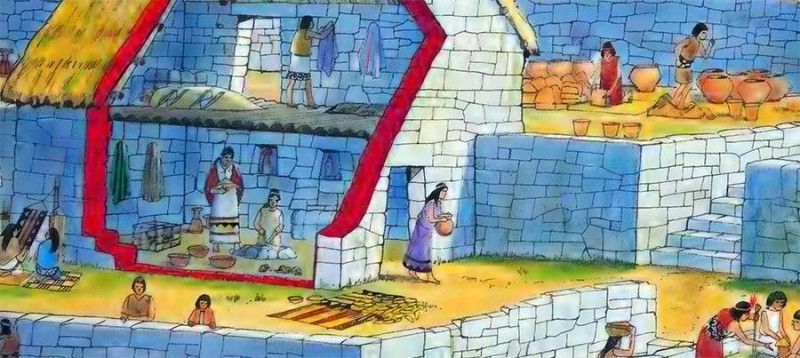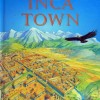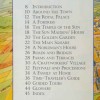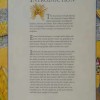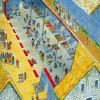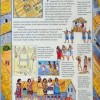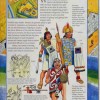Metropolis guides give practical information about life in the cities of the past, including guidebook details for the armchair traveler: important sights to see, suggestions on what to eat and drink, where to stay, and what to do. With tips on local customs and useful phrases, these are essential guides for every young historian.
This edition of the Metropolis series “Inca Town” (published in 1998) includes some beautiful illustrations reflecting life during the times of the Inca Empire. The content includes the following sections: Around the town, the royal palace, a fortress, the temple of the sun, the sun maidens’ house, the golden garden, the main square, a noblemans’ house, roads and bridges, farms and terraces, a craftworkers’ village, festivals and processions, a family at home, time-travelers’ guide a more…
Extract of the book:
The Inca empire of South America was composed of many different nations and peoples, including the Quechua, Aymara, and Chimu. Each of these peoples had their own languages and traditions. But the Incas were the most powerful of these peoples and dominated all their neighbors.
Emperor Pachacuti began to conquer nearby lands early in the 15th century and the empire was probably at its most powerful at the end of that century and early in the 16th century. The Incas’ empire collapsed in 1532 when treasure-seeking Spanish soldiers invaded Inca lands.
In this book, we take you on a tour of an Inca town at the end of the 15th century, before the Spaniards arrived. The town is loosely based on the great city of Cuzco, high in the Andes mountains in modern Peru, but because there are no maps from this time no one can be absolutely sure what Cuzco, or any other Inca city, was really like.
Nor is anyone quite sure how and when Cuzco was founded. According to an Inca legend, the city was founded by the first emperor, Manco Capac, and his wife, Mama Ollco. Together, they had wandered through the land, looking for somewhere to settle. The emperor had with him a golden staff. Every so often he threw it down, but the earth was always too hard and the staff just fell on the ground.
But one day the couple came to a fertile valley and the gold staff sank into the rich soil. Manco Capac took this as a sign from the gods and so he founded Cuzco, his new capital city, at the spot where his staff had stayed upright in the ground...


